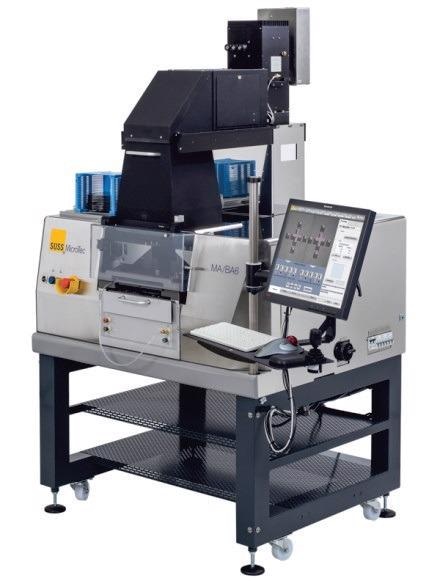A mask aligner is a precision machine tool used in the semiconductor manufacturing process to transfer a pattern onto a wafer or substrate; these patterns are micro and nano in scale.

Image Credit: Gigahertz-Optik
The patterns (structure) are created using a shadow transfer method, where the pattern (photomask) to be printed is placed between a light source and the substrate to be patterned (wafer). The substrate being patterned is first coated with a photosensitive material (photoresist), this material then reacts to the light projected from the shadow image. The resultant pattern is then developed using specific chemicals.
This process is commonly known as photolithography, more details of this micro-fabrication technique are covered in a separate document Lithography Basics (courtesy of inseto, uk).
Mask aligners enable photolithography to be used to produce semiconductor devices, such transistors, sensors and medical components, etc.
Along with a method to uniformly coat the substrate with photoresist, a mask aligner is crucial to the photolithography process. A mask aligner is used to both precisely align the coated substrate to the photomask containing the structure to be patterned, and for then exposing the substrate with light to transfer the desired pattern onto the substrate.In applications where the light detector is susceptible to changes in temperature, as in a UV mask aligner used in semiconductor photolithography, the light detector temperature coefficient must be considered as a possible error source.
Many current mask aligners employ a powerful mercury (Hg) lamp emitting high levels of UV that exposes the photosensitive material (photoresist) on the substrate. Dependent upon the photoresist used, the light should be transmitted in either the broadband range, or in a specific spectrum G: 436nm, H: 405nm or I: 365nm.
An alternate option gaining favor to the mercury lamp is to use a UV LED array. These contain a number of LEDs that emit light at the G, H or I line wave-lengths, or a combination of all three to produce a similar broadband spectrum to that of the mercury bulb. (inseto-What Is A Mask Aligner)
Gigahertz-Optik manufactures many differently configured UV filter radiometers for classical spectral broadband UV lamps such as medium & high pressure mercury vapor lamps or low-pressure lamps found in mask aligners. These radiometers have been developed in coordination with our customers that manufacture mask aligners and other photolithography apparatus. Often this results in us becoming an OEM supplier with private label business arrangements. We offer unique customized solutions like temperature correction function built-into the electronics that measures the temperature and corrects the irradiance reading accordingly.
We also offer UV radiometers for measuring the irradiance at different LED wavelengths and spectroradiometers which provide wavelength as well as intensity information. The advantages of UV filter radiometers include a favorable price/performance ratio, a flat low profile detector design as required, fast measurement times and robustness. Spectroradiometers are not restricted to a specific spectral bandpass so they are more versatile and useful especially in research use.
Source: https://www.gigahertz-optik.com/en-us/